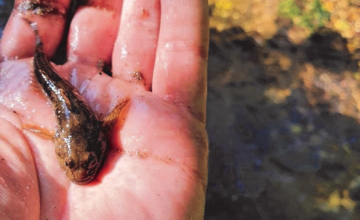Species Account for Cottus gobio
Cottus gobio Linnaeus, 1758
Bullhead
Fish: Cottidae

Reproduction for study and non-profit use permitted, all other rights reserved.
Taxonomic group: fish (Fish) - Available county data
View time series maps for Cottus gobio
member log-on for taxon report
Images
upload a new image
Species text
Bullheads, also known as Cottus gobio, are small freshwater fish commonly found in Essex rivers and streams, especially in clear, fast-flowing waters with gravel or stony beds. Bullheads are notable for their wide, flattened heads, and are typically well-camouflaged against the riverbed. In Essex, as elsewhere in the UK, their populations can be sensitive to water pollution, habitat loss, and changes in water flow, making them a useful indicator species for river health and quality. Conservation efforts in the region often focus on maintaining clean, well-oxygenated waters to support these and other native fish. References
Habitats
Why not join the Club, register and add a new species page
Interpretation of distribution maps



















